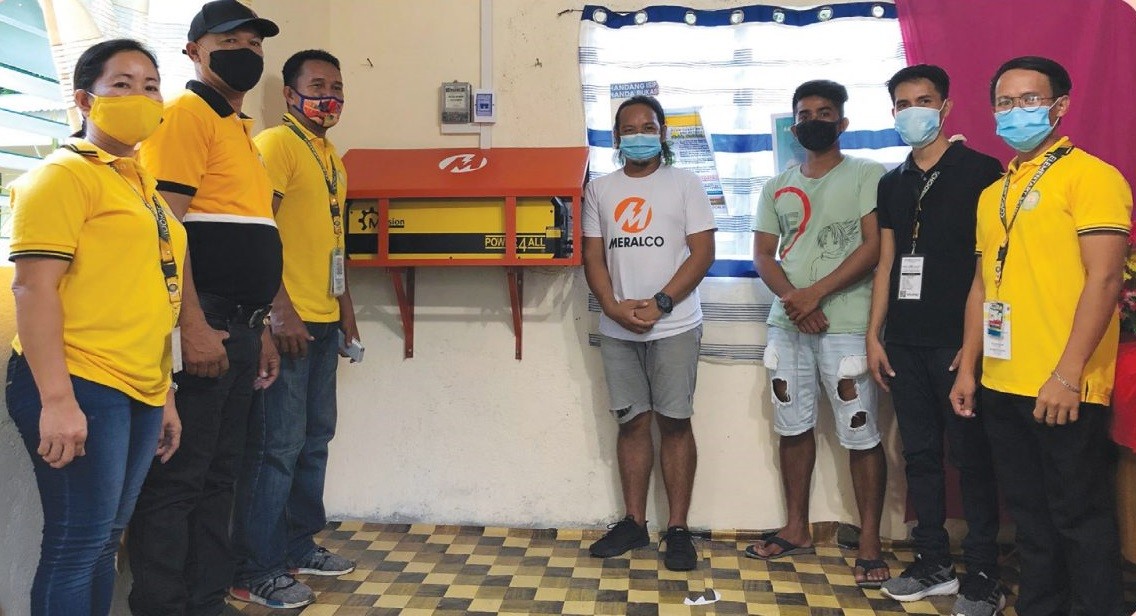






During pandemic, lack of access to electricity is a serious challenge for teachers and students in remote schools in the country.
Before the COVID-19 outbreak, thousands of public schools in the country have no power supply. Most of them are located in some of the most remote islands and mountains in the country.
Corocawayan Elementary School is located in the island of Camandag, Sto. Nino, Samar. The island is two hours away from the mainland so it cannot be reached by electricity provider.
The residents here rely only to some neighbors or barangay that has own generator to have electricity in their homes even for just a few hours per day.
But because the generator is expensive, they are forced to limit the operation to only four to five hours per night. As a result, eight schools in the island do not have daily electricity.
“The situation here is really difficult, especially for our students. In other places, children are trained in modern learning tools such as computers and the internet. But here, we can do nothing but go back to the traditional way of teaching because there is no electricity,” said Dennis Cubelo, principal of Corocawayan Elementary School. Cubelo is from Leyte, he is a former seminarian in Manila. After a few years in seminary, he realized that he wants to pursue a different vocation. So, he decided to leave the priesthood and work as a teacher.
“Actually, I only thought of becoming a priest because I wanted to help shape our children’s future. That is why when I got out of the seminary, I decided to pursue teaching because it was close to my first chosen vocation,” the teacher added.
After teaching in a private institution in Manila, Cubelo decided to return in the province because he realized he was needed there more. He was first assigned in the island of Camandag as a teacher until he become a principal.
According to Cubelo, he sees the efforts of the students in the island to enhance their knowledge, he knows that they need to improved more when it comes to experience with modern technology.
When the Covid 19 pandemic began their problems became more severe.
In 2020, for the safety of teachers and students, the Department of Education (DepEd) decided to adopt “blended learning” where students will continue their homework. Teachers are required to download and reproduce learning materials to be distributed to their students.
Before the opening of the school year, Cubelo did not know how to implement "blended learning" in their school, especially since they did not have electricity and adequate equipment such as laptops and printers. The internet connection in the island is also poor.
Before the pandemic, they had to cross the sea if they need to use a computer or printer in the mainland to access in the internet. If they use a generator, they spend almost two thousand a day because it is expensive to rent and the crude needed for it.
It’s a great blessing for them when a Mission 1200 portable power station arrived. The system is donation of One Meralco Foundation in partnership with Power4All, a month before the class starts
Under the School Electrification Program advocacy, One Meralco Foundation installed 1-kilowatt solar power equipment at Corocawayan Elementary School and other schools with no electricity in Sto. Nino, Samar and other province of Masbate.
Since 2011, more than 260 schools nationwide have been lit by OMF with solar power. Beneficiaries include schools from Calayan Island in Luzon to the farthest island of Tawi Tawi, Sitangkai Island, in Mindanao.
In addition to the Mission 1200 portable power station, each school will be given a multimedia package donation from Meralco staff, through the Meralco Employees Fund for Charity, Inc. (MEFCI).
Since One Meralco Foundation began its program more than ten years ago, more than 80,000 students nationwide have been blessed with light from solar power. And it does not need fuel or crude oil, it is not harmful to our environment and teachers and students can use the electricity for free.
